Our journey starts in Cairo and touches on all the places that testify to the ancient history and the great beauty of nature. Discover all the best things to do in Egypt! Discover all the splendor of ancient civilizations, history, deserts, the sea, and beaches!
Cairo
Inhabited by 16 million inhabitants, today it is a multifaceted metropolis endowed with great charm due to its extraordinary past. It stretches along the Nile River, where it leaves the desert region and flows into the delta region with three branches. This millennial city is divided into three regions. The first, western, was built on the model of Paris of the 19th century with wide avenues, squares, as well as government buildings, and generally modern architectural structures. Then there is the eastern part, the oldest, with streets where it is always crowded and full of ancient mosques. From here, bridges connect islands on the Nile, such as Gezira and Roda. In the western part of Giza, part of the Memphis necropolis, there are the most famous pyramids, including the pyramid of Cheops.
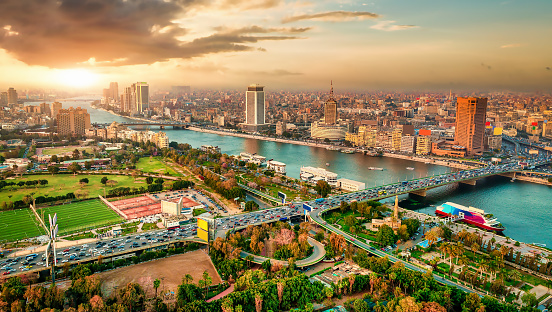
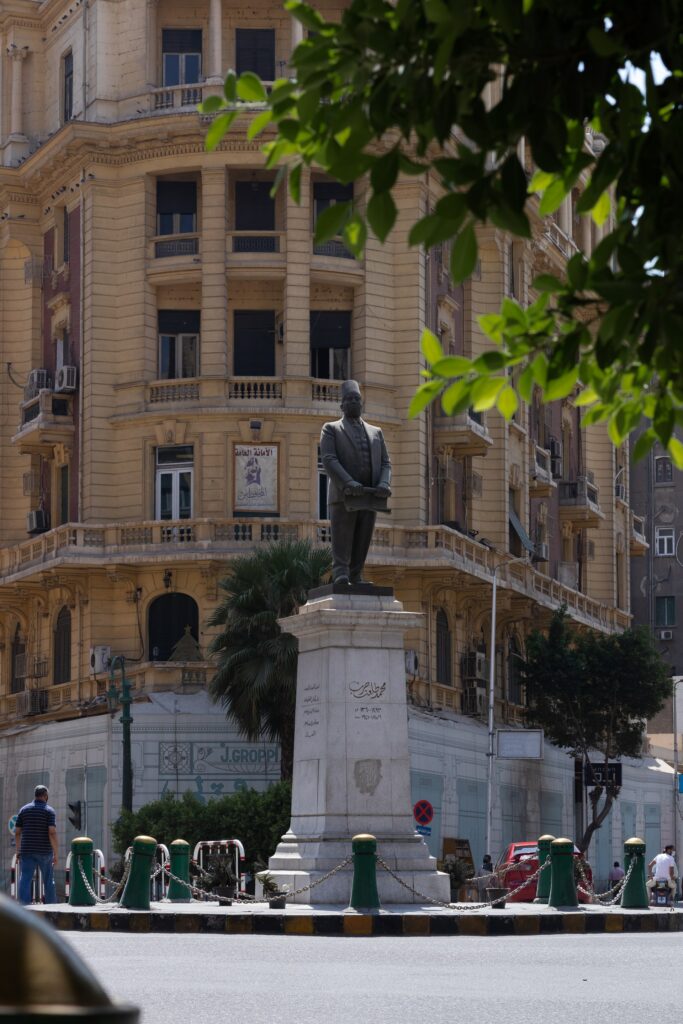
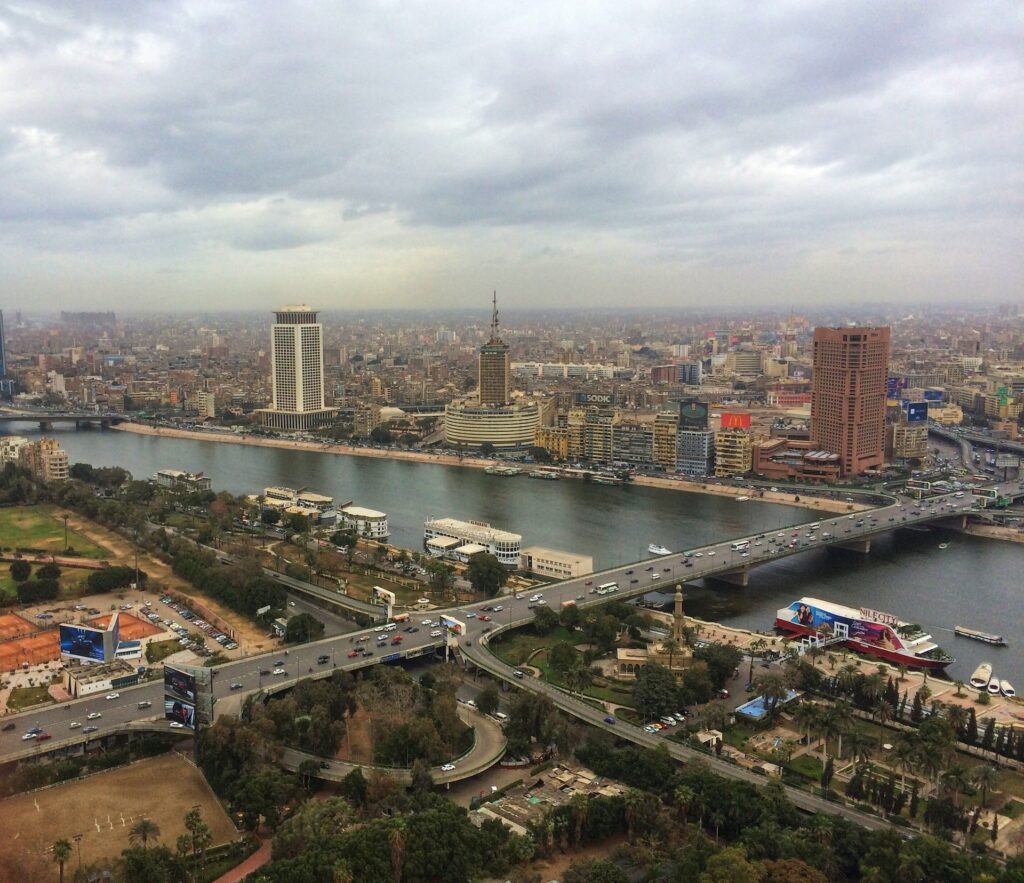
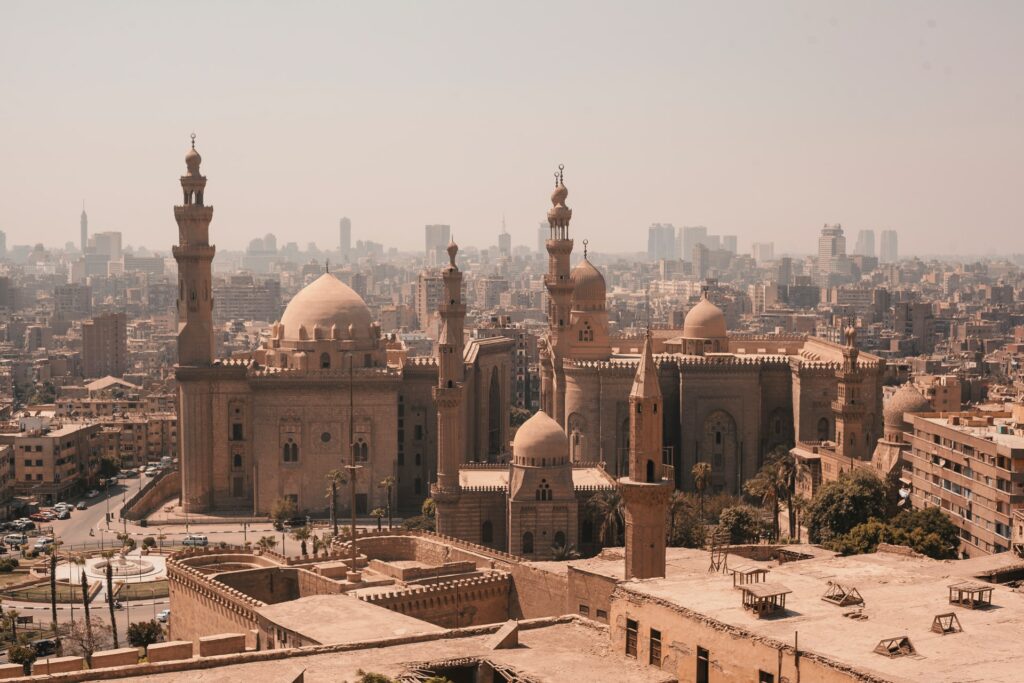
On the streets of Cairo, populated with evidence of the Pharaonic, Coptic, and Islamic periods, there are wonderful monuments and an endless number of attractions: ancient temples, Christian churches, the pyramids of Giza, art galleries, and concert halls, as well as mosques. In the first place, of course, is the Egyptian Museum with the world’s richest collection of artifacts and objects of King Tutankhamun. The ancient necropolis retains its charm, and the Church of San Sergio and what remains of the Roman fortress of Babylon are also worth a visit. Obviously, from Cairo, you can go on a camel tour of the desert, to the pyramids, between the dunes and the fiery sunset.
Before leaving the city, it is advisable to visit Souk Khan El-Khalili Bazaar, which has remained unchanged for centuries and is fascinating with this characteristic, to buy perfumes, jewelry, carpets, and spices. Here, like at the tent-makers’ bazaar or the bazaar on Mohammed Ali Street, some sell camels. Speaking of food, on the other hand, trying Egyptian cuisine means first of all appreciating vegetarian dishes: there are many of them, and finding them in local restaurants is another reason to go in search of new tastes and new experiences.
Alexandria
Not much evidence of the ancient city remains, but the charm of its history, mixed with modernity, remains evident in European-style residences, cafes, and monuments of the Greco-Roman era. Among the shreds of evidence of this historical stage, in particular, the Catacombs of Kom El-Shukaf stand out, as well as the magnificent underwater ruins of Montaz and Maamur. And in this context, a special predisposition of the city to each kind of art is added in a particularly favorable climatic context, where the sea breeze blows, it makes the summer cooler than in other areas of Egypt.
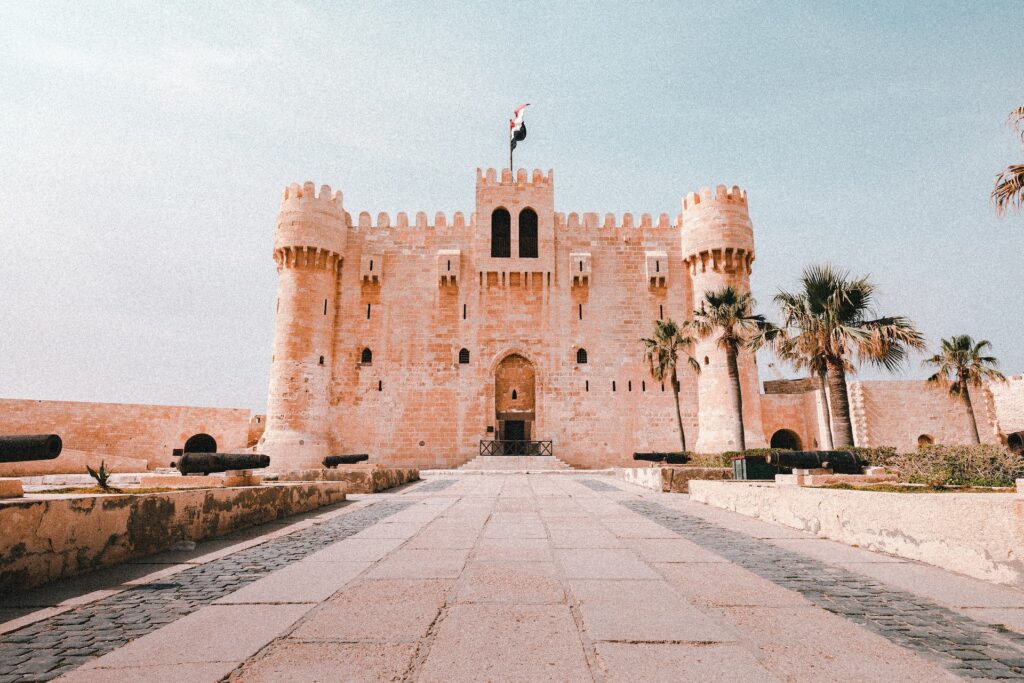
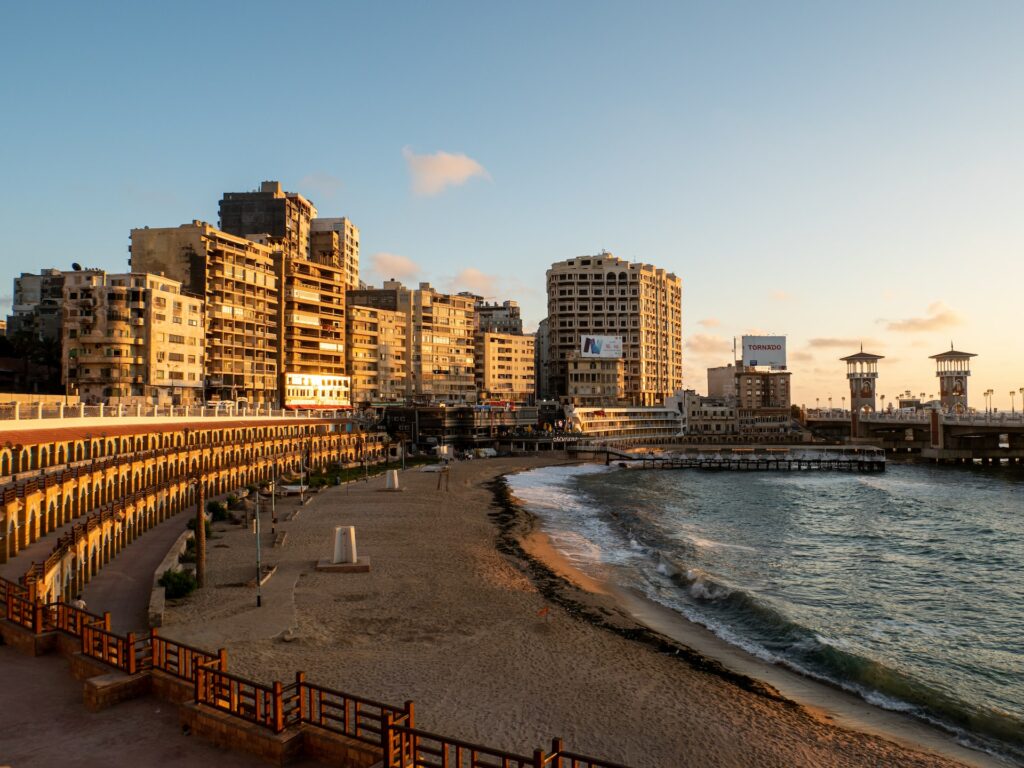
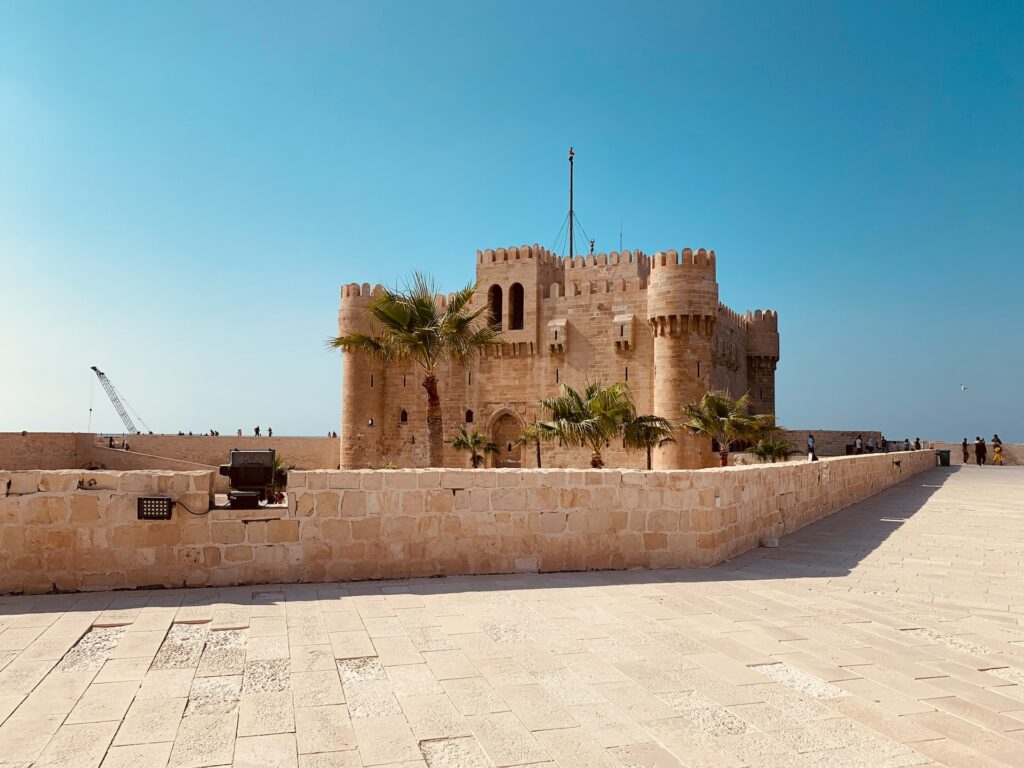
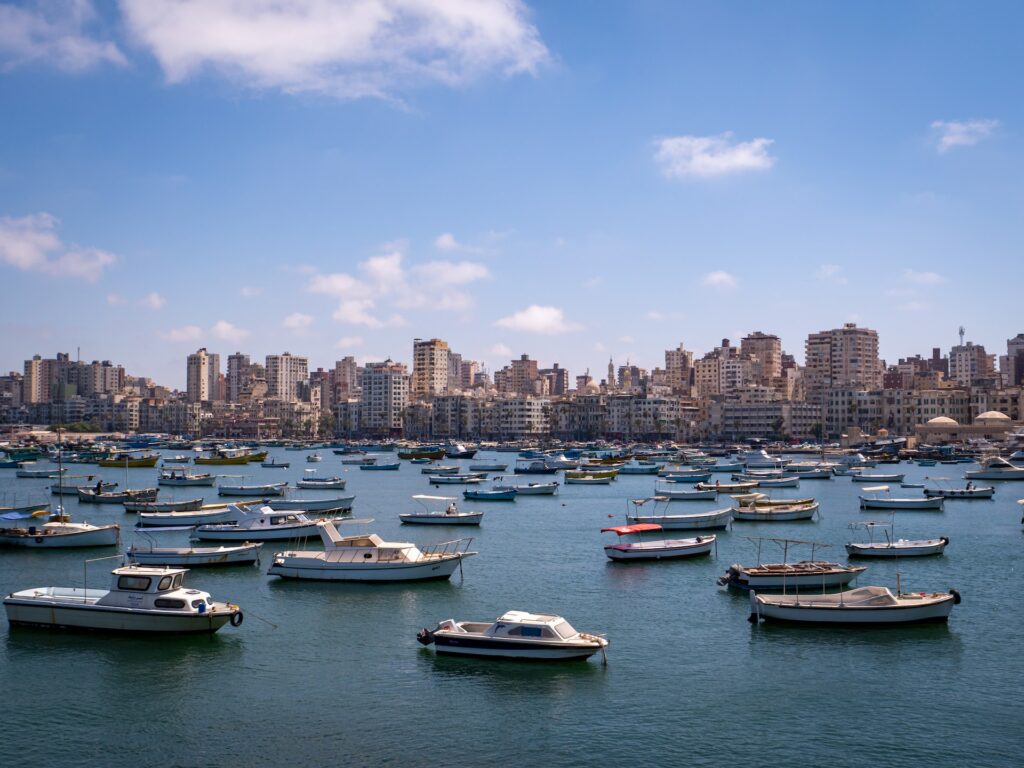
The embankment of Alexandria (built in the 1930s) is a beautiful place from Ras El Tin to Montaza. And the 400-meter Stanley Bridge majestically towers over the bay of the same name with characteristic towers. Closer to the center you will find the National Museum in the renovated building of the Al-Saad Basili Pasha Palace. Four epochs of Egyptian history are summarized here: from the ancient era to the Greco-Roman era, from the Coptic era to the Islamic era. Don’t miss a visit to the famous Bibliotheca Alexandrina building, a huge space designed to accommodate 8 million books. The Opera House is also a small but unusual cultural center. Strolling, the streets of the El Attarin market attracts tourists, offering all kinds of souvenirs.
On the embankment, we also find the best fish restaurants. Here, near the fishing port of Abu Kir, you can go fishing, sunbathe and even swim. The beaches are very beautiful, between the bays and ports, up to the Eastern Port of Alexandria in the shape of a crescent, protected by the fortress of Kitebay. In the northwest, you arrive at Abu Kir, an archaeological site where you can explore the flooded cities of Heraklion and Canopus. Hundreds of amphorae testify to the trade that enlivened the routes to the Roman Empire. Cleopatra’s palace, now flooded, where the beauty queen is said to have met Mark Antony. Cleopatra’s boats are still visible, boats that transported amphorae with wine and wheat.
Luxor
On the right bank of the Nile, there is a city with a population of 500,000 people, and in the western part, there are the remains of an ancient Egyptian necropolis. This detail is already enough to emphasize the peculiarity of Luxor, an open-air museum that stands on the ruins of the mythical Thebes. The ancient temple complex, known as the Luxor Temple, is something extraordinary with its monumental colonnade, a statue of Ramses II, and beautiful carvings on the walls. Adjacent to this structure in the village of Karnak is the great temple of Amun, which at the entrance greets visitors with a display of sphinxes with ram’s heads and keeps the ancient temple of Ramses III inside.
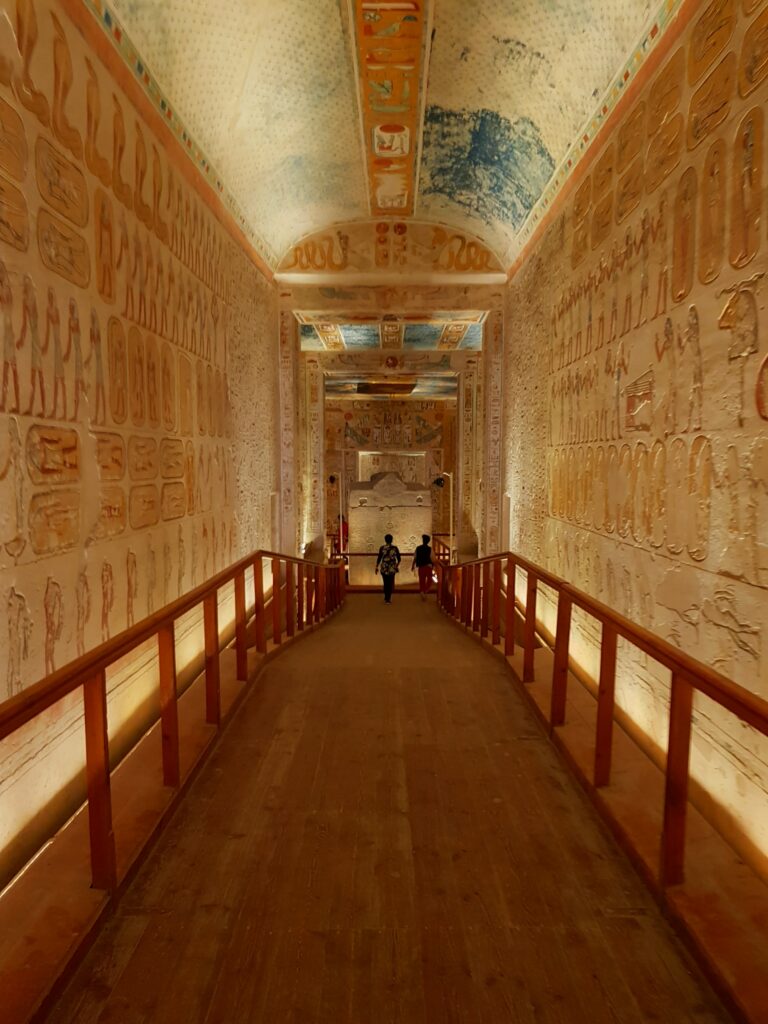
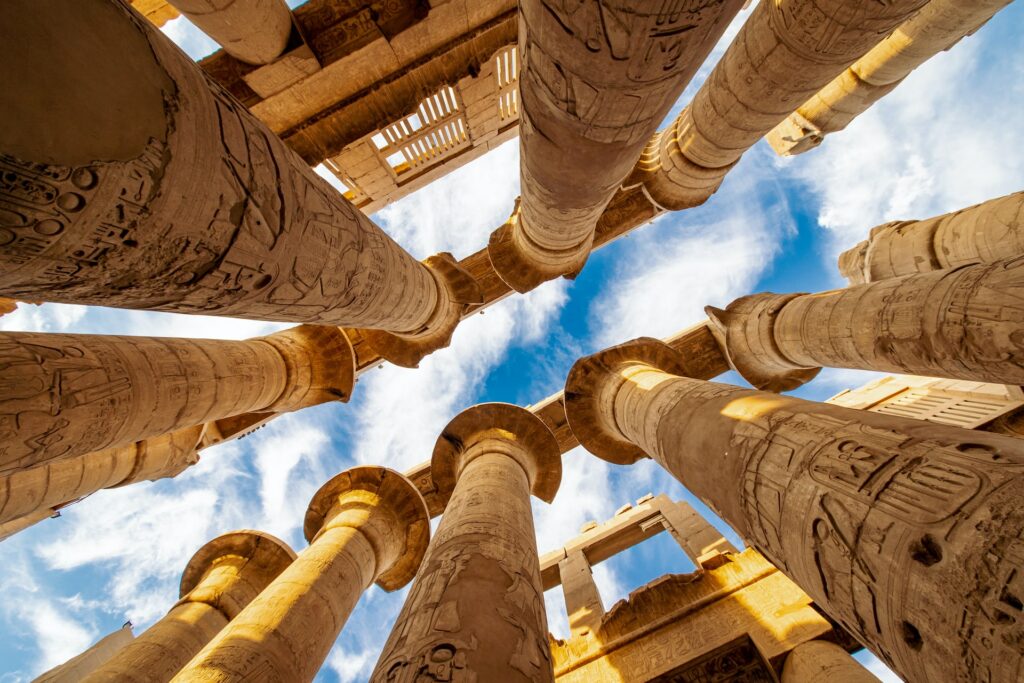
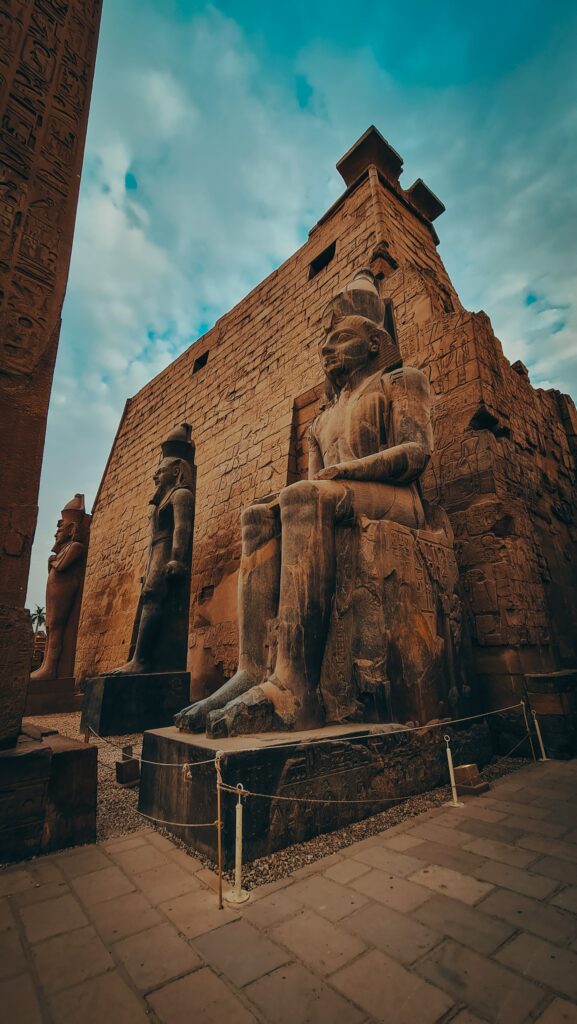
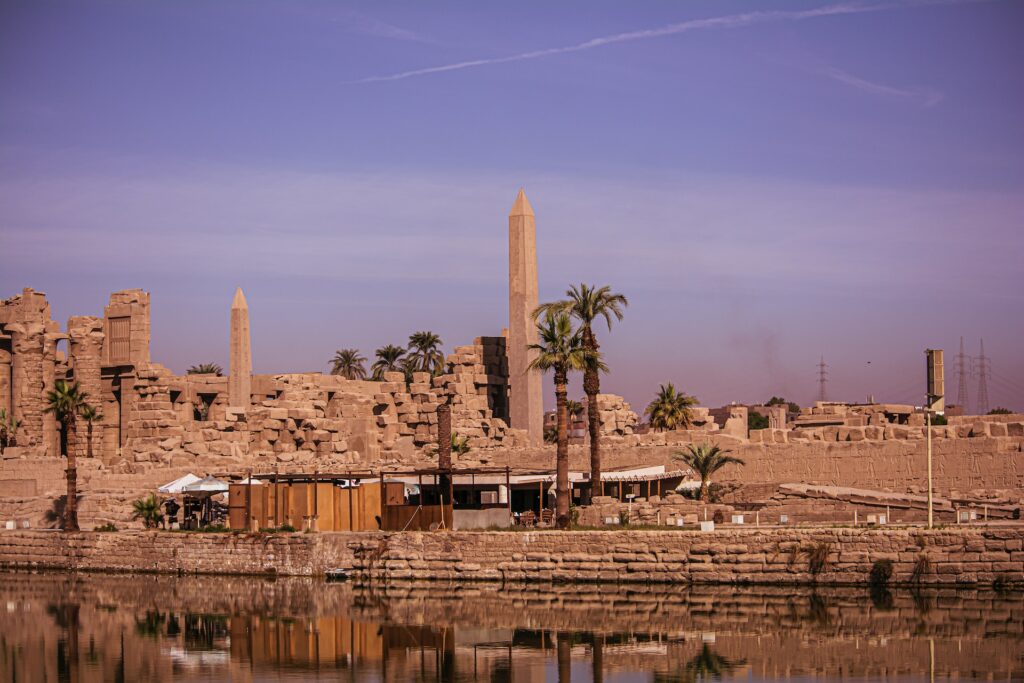
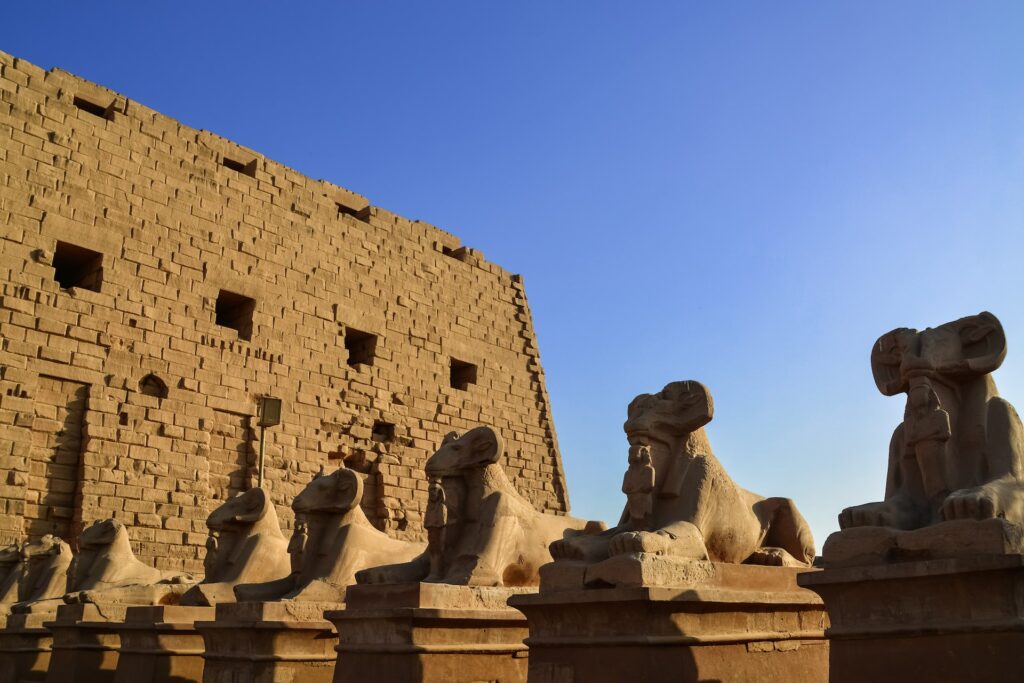
The Valle del Re area, another UNESCO heritage site, is one of the main archaeological attractions. For about five centuries between the sixteenth and eleventh centuries BC, it was used by the pharaohs as a burial place. But Luxor also presents other architectural evidence, especially in an Islamic context, starting with the Abu al-Hajaj Mosque: a magnificent 11th-century minaret, it owes its name to the sheikh, who is still considered the patron saint of the city.
Aswan
In the extreme south of Egypt, a thousand kilometers from Cairo, the city of Aswan is a pearl that has yet to be discovered. The most important point of any cruise on the Nile, is there are magical temples such as Abu Simbel and Philae, as well as natural wonders and treasures of the past. However, each visit begins with the spice market, known as the Sharia market: cinnamon, saffron, pepper… the aromas proclaim all kinds of miracles. But there is also a place for fabrics and silverware. And if we want to visit a museum, the best is the Nubian Museum dedicated to the history of the Kingdom of Kush, a place erased with the construction of the Aswan Dam.
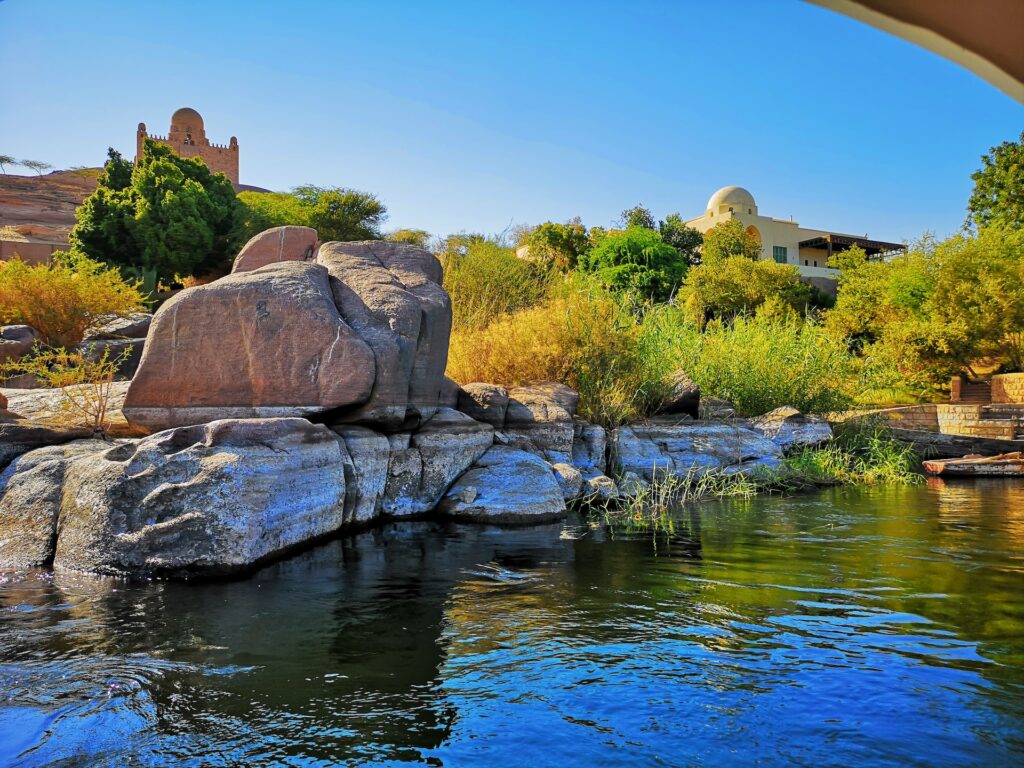
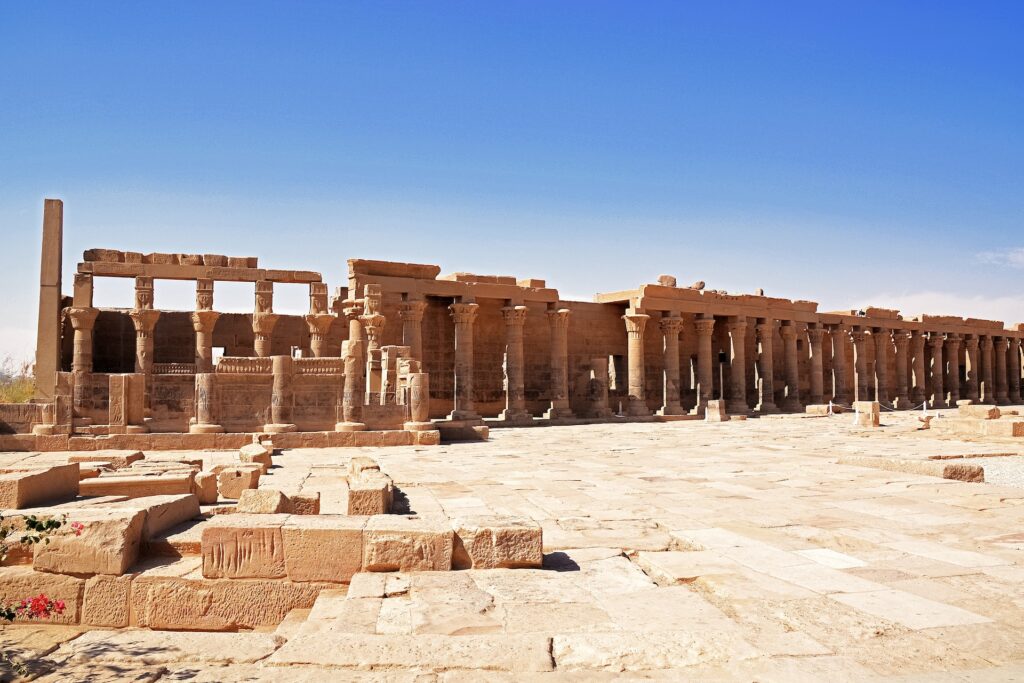
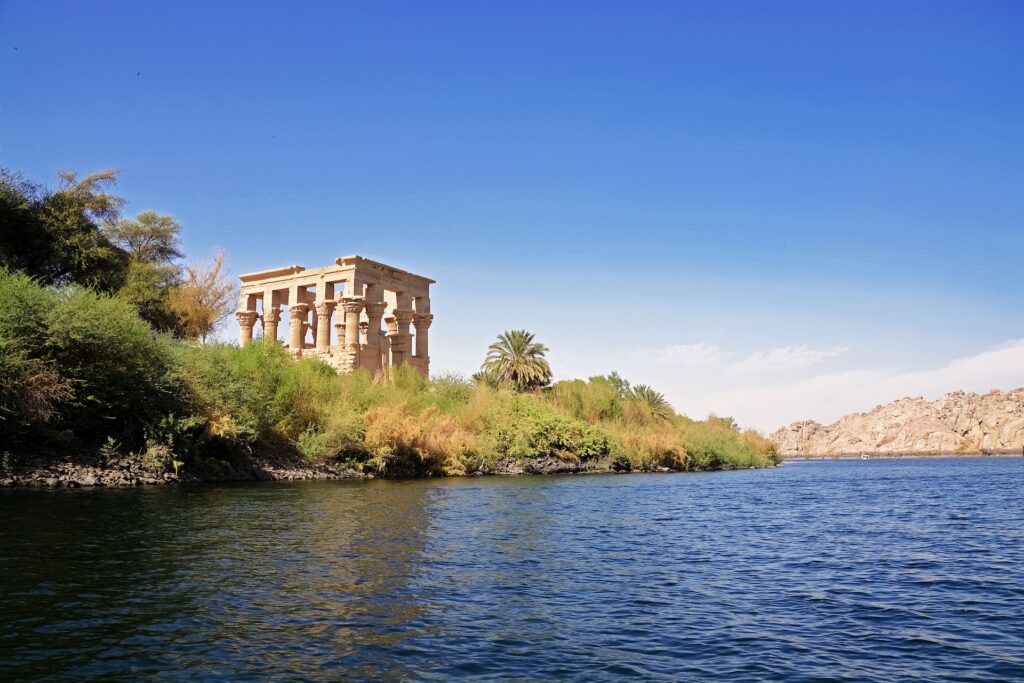
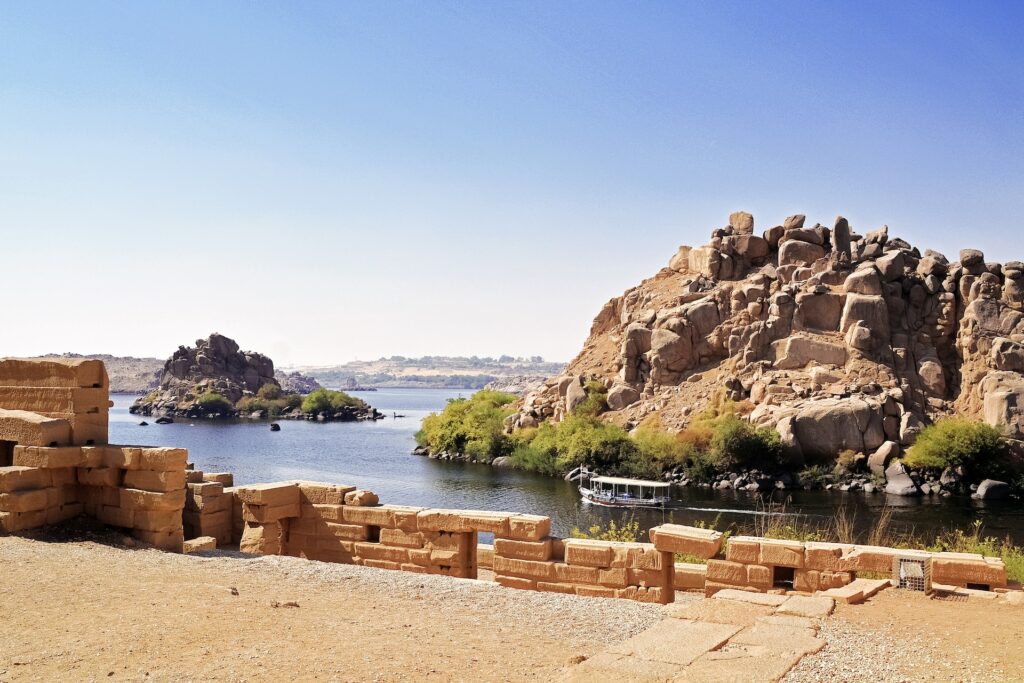
On the Nile, not far from Aswan, the island of Elephantine with the traditional villages of Coty and Sioux is an interesting stop from the point of view of the local population, hospitable and festive. Nubian natives live in colorful houses where they once kept a crocodile in an aquarium! Among other things, there is a nilometer on the island, an ancient means of measuring the level of the Nile. On Kitchener Island, on the other hand, there is a botanical garden with plants from Asia and Africa.
Outside of Aswan, we come to the Mausoleum of the Aga Khan, located on a hilltop on the banks of the Nile. The temples of Philae on the island of the same name dating back to the Tolomei dynasty and were dedicated to Isis. Ruins of Christian churches were found in the same place. On the opposite bank of the Nile, we find the tombs of the nobility, that is, the Egyptian rulers, since the time of the Ancient Kingdom. Finally, 250 kilometers from Aswan, it is worth visiting the beautiful Abu Simbel Temple.
Sharm El Sheikh
The beauty of this famous tourist destination at the southern tip of Sinai has a thousand facets, connected not only with the beaches and the blue-green sea with fish of a thousand colors. For example, a person is fascinated by admiring the night sky full of stars. In the evening, after a day of rest, you will discover the old town and the Old Market, and inside the Bedouin fields, fragrant with coals and hookahs. Here, a gray rock hides camel cemeteries against the backdrop of harsh mountains, where such jewels as the Byzantine-style monastery of St. Catherine are hidden. A real surprise will be to discover gardens with olive trees and vineyards in an arid landscape thanks to water from wells. For centuries, the fortress built by Justinian was a garrison of monks in a place where the stories of three monotheistic religions intersect. Here his fate was announced to Moses.
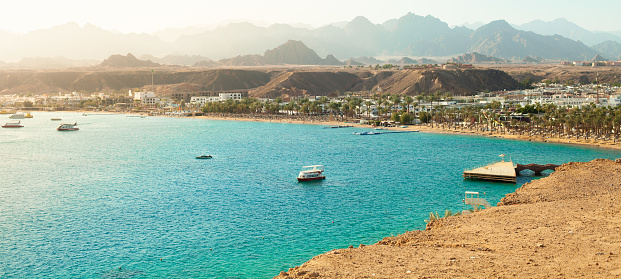
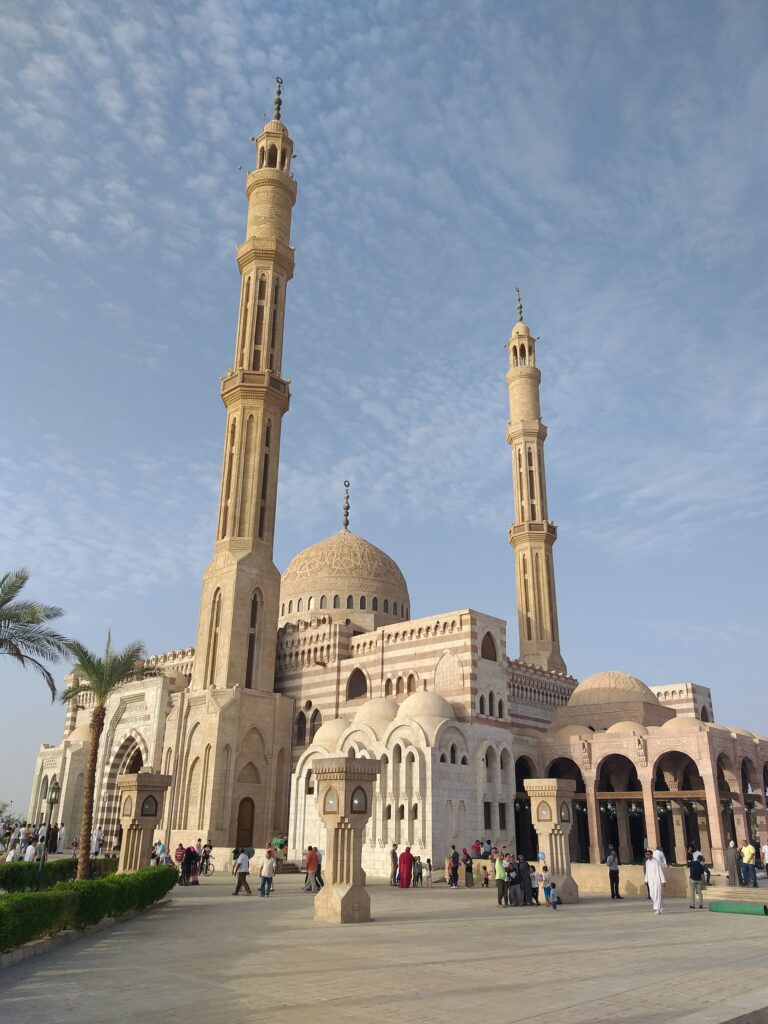
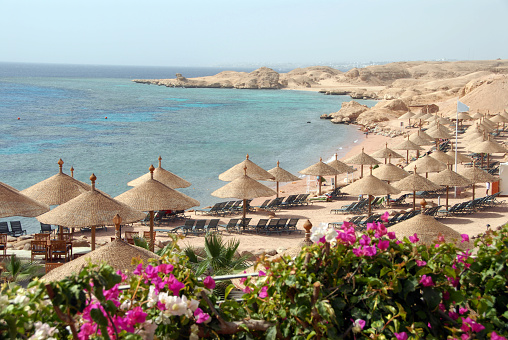
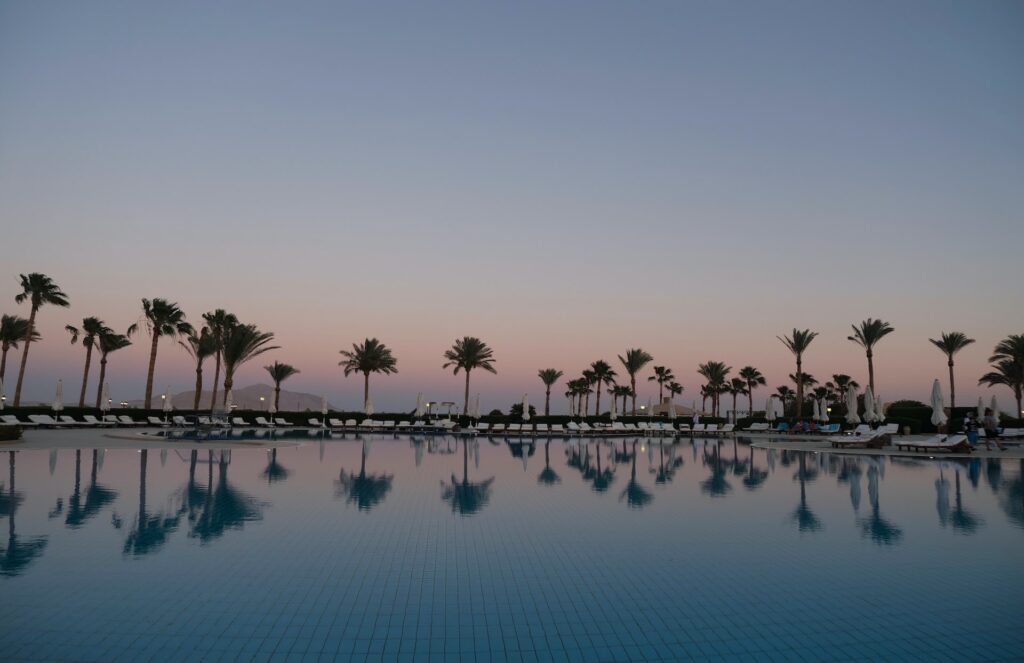
And then there is the seabed, which attracts crowds of scuba divers and scuba divers. Thirty kilometers of rugged and rocky coastline turn into beautiful beaches and unexpected coves. From the north of El Naqba to the lively Sharm el-Maya. From the quiet beaches of Ras Nasrani, you can enjoy the view of the island of Tirana. The center of resort tourism is located in Naama Bay, full of nightlife, souvenirs, and a clear sea. The most beautiful coral reef of the Red Sea is located in Ras Um Side, where the desert with the colors of sunset and morning offers moments of absolute charm.
Giza
One of the most important necropolises is located about twenty kilometers from Cairo. Here, for example, stands the famous Sphinx, the oldest monumental sculpture: it dates back to 2500 BC and has always guarded the pyramids, the only ones among the seven wonders of the ancient world that are still intact. Five thousand years ago, Giza became the necropolis of Memphis, or rather the ancient Egyptian capital. Three pyramids are dedicated to the burial of deceased kings. Satellite pyramids and stone tombs are the burial places of the Queen and other prominent members of the court. Among the tombs next to the pyramid of Cheops, the tombs of Kar and Ida are the most important, as they are decorated with reliefs and statues illustrating the life of the dead.
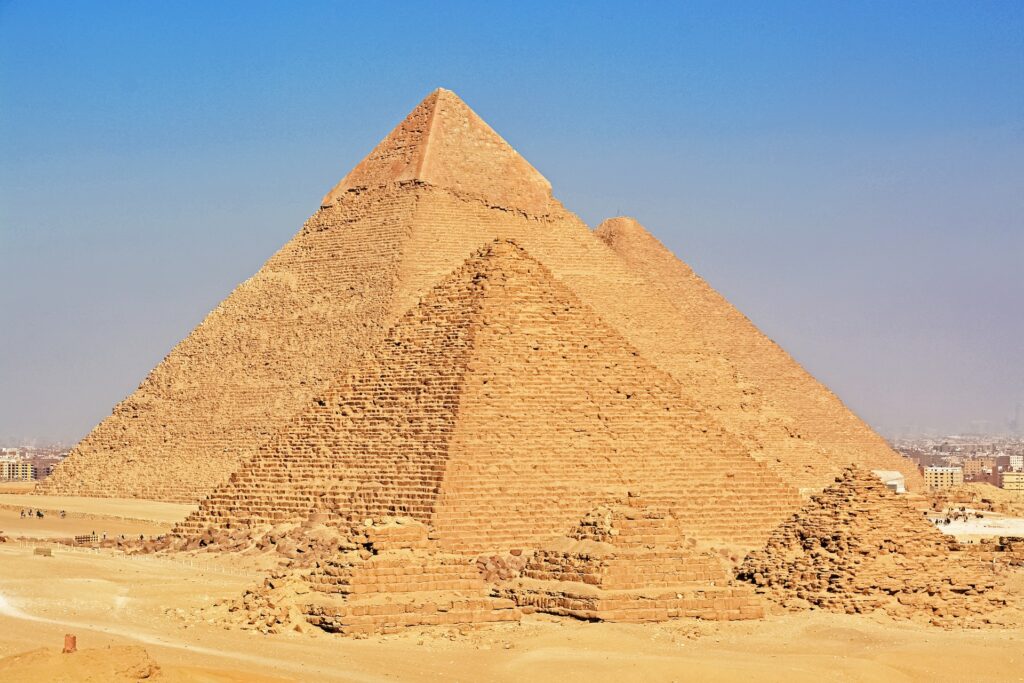
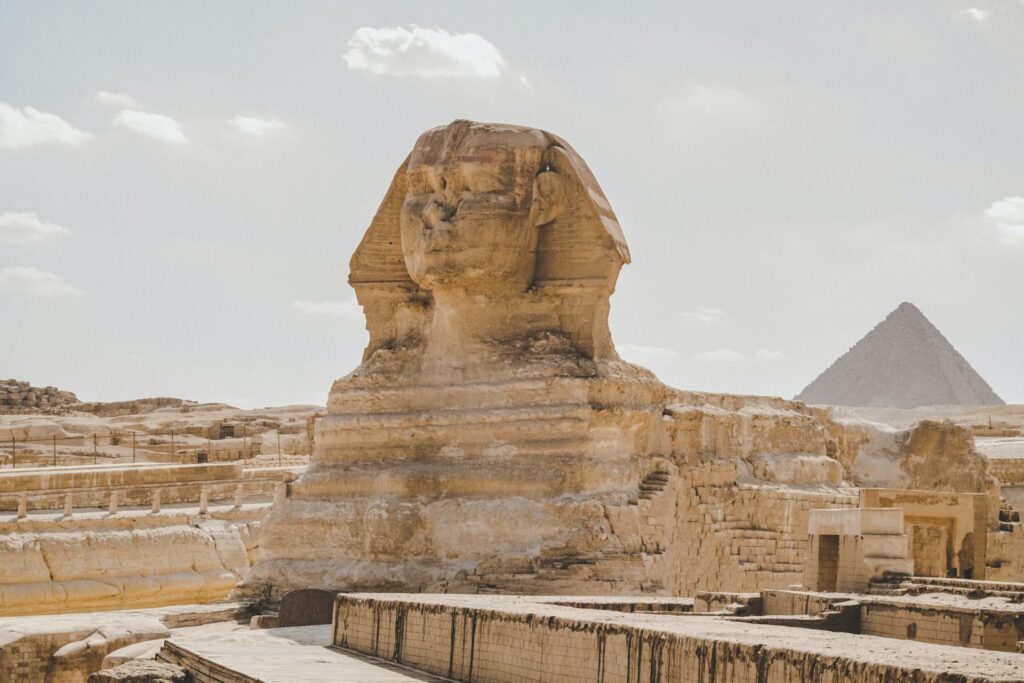
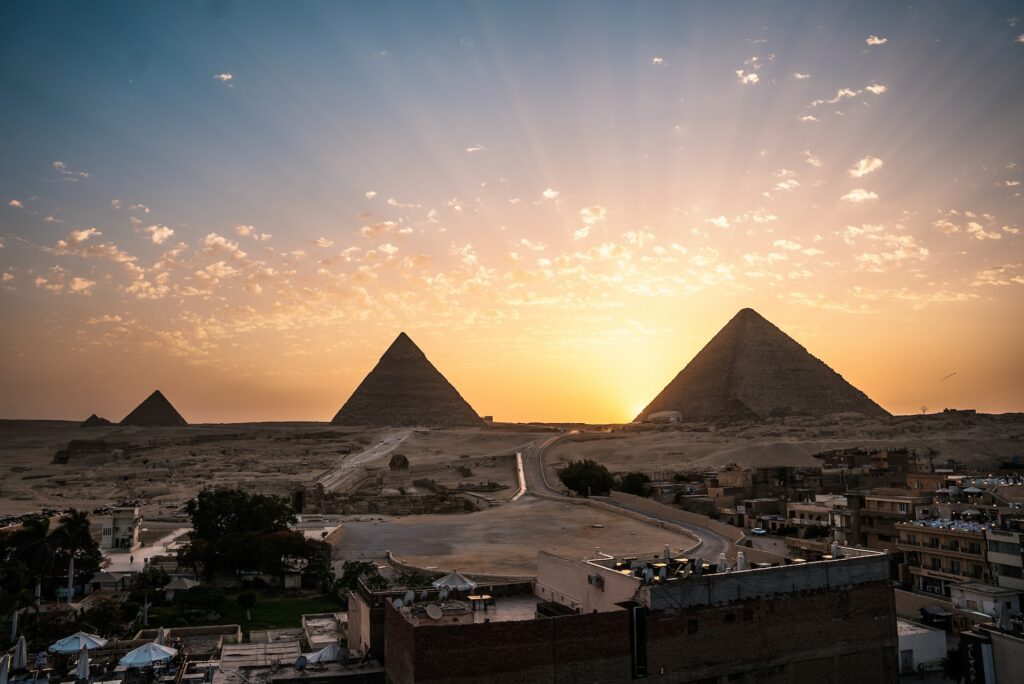
Abu Simbel
From the Egyptian route, we cannot exclude a stop at a very famous archaeological site or in the temples that Ramses II built after the Battle of Kadesh and which were built to defy time. They are located south of Aswan and near the border with Sudan, as the king wanted to protect them from any destructive actions of his successors. However, it was the sand that protected them, completely covering them until 1813, when they were found by the Swiss archaeologist Burckhardt. After the construction of the Aswan Dam, to avoid flooding from the Nasser reservoir, in 1964 the Abu Simbel complex was divided into numbered blocks and rebuilt 65 meters higher and 200 meters further. A sensational operation and, fortunately, quite successful.
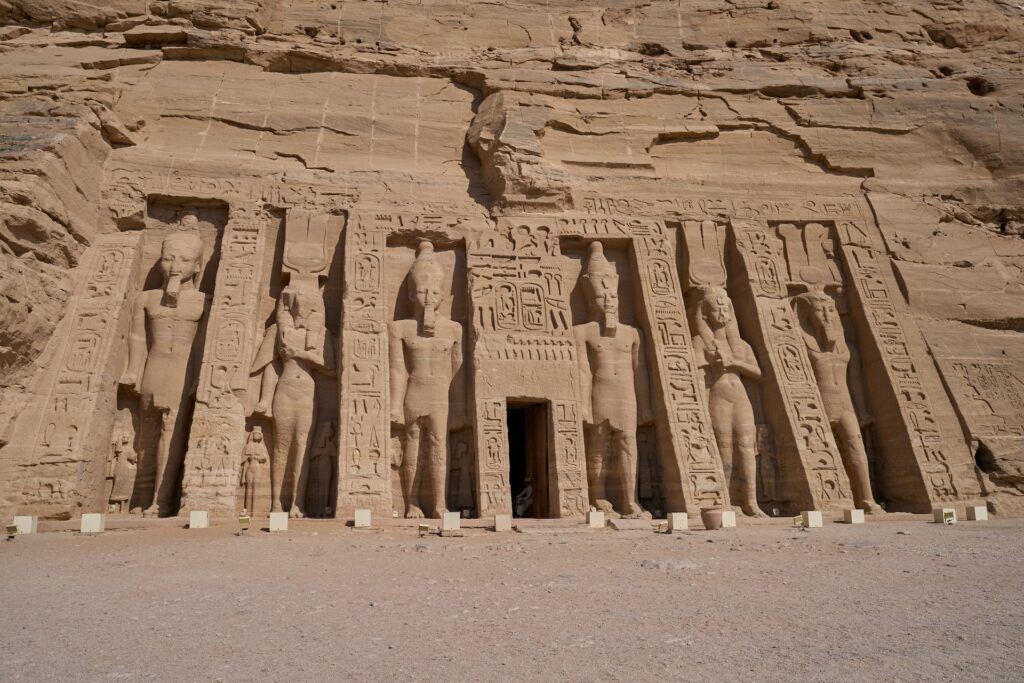
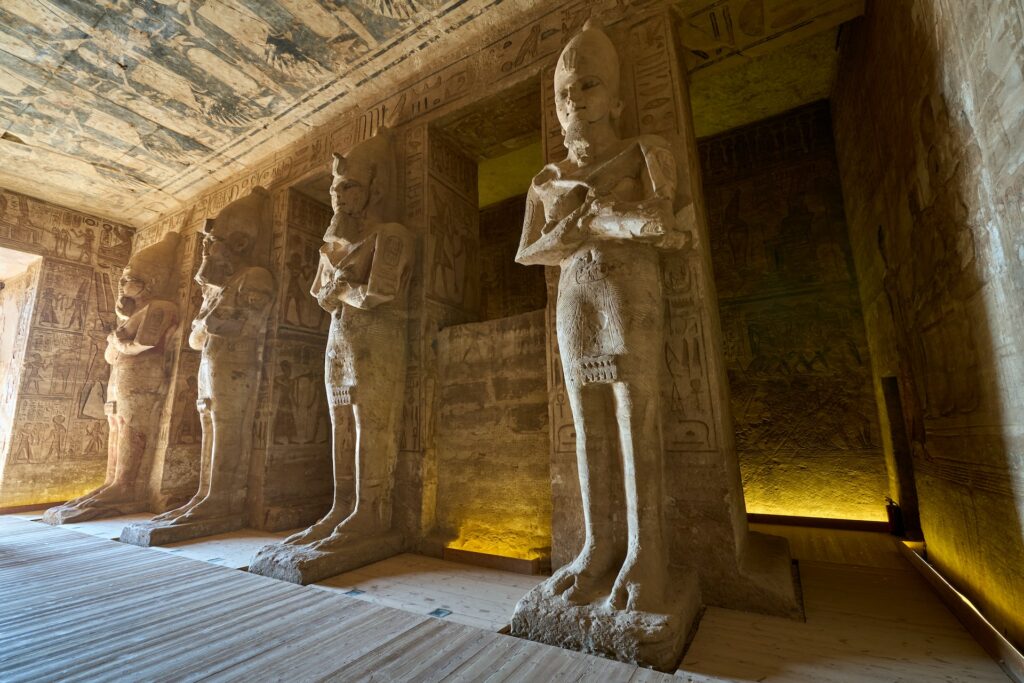
The structure is divided into a large temple dedicated to the Pharaoh and a smaller temple in memory of his wife Nefertari. On the facade of the first, there are four colossi of King Ramses II, sitting on the throne. Even in a small temple, two colossi of the king and two colossi of the queen are reproduced. Inside you will reach the Sanctuary: it is here that the Miracle of the Sun takes place. Twice a year, the sun penetrates the mountains and gradually reaches the statues of the sanctuary, completely illuminating them.
Twenty minutes of dazzling and amazing light. Charging with energy according to ancient beliefs. Only one statue is not illuminated, the statue of the god Ptah, who is the god of darkness and the dead. After the temple was moved, the phenomenon no longer occurs on February 21 and October 21, but with a delay of one day.
White Desert
She can leave you without words: Sahara El Beida or the white desert. It stretches between the oases of Farafra and Bahariya, on the border with Libya. All the magic is in the flawless color of the sand, but not only. Even unusual rock formations give an unusual appearance to the whole environment, as well as the colors that the sky acquires at different times of the day and night. Where the desert is now, once (5 thousand years ago) there were springs, rivers, lakes, and animals of all kinds. Today, traces of that distant past remain in the sands.
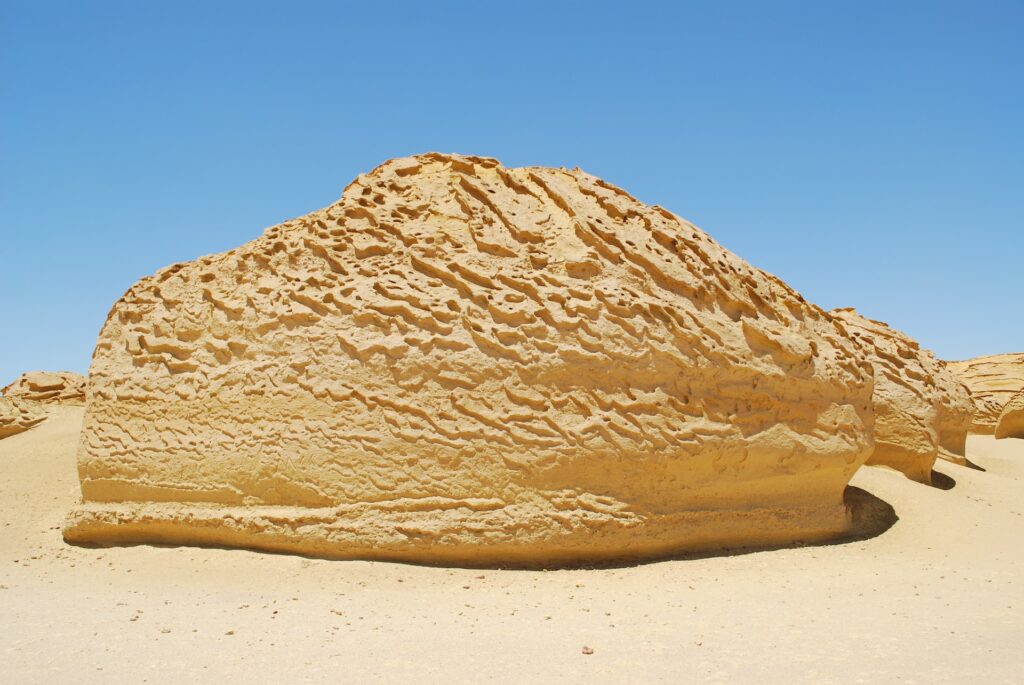
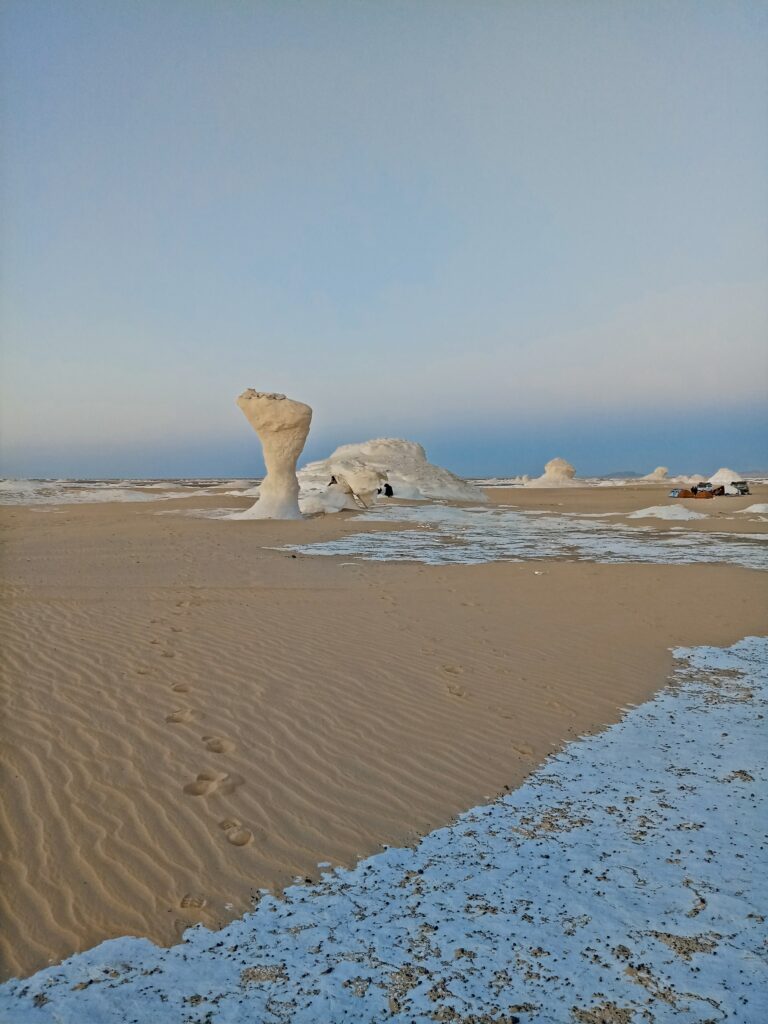
More than 2 square kilometers of magic. Which includes the Mountain of the Dead, the archaeological area with the temple of Amun, and the famous Cleopatra pool with its emerald-green waters. Today the White Desert is a national park. Every August it is cleaned after the passage of tourists. A blinding glow characterizes it. Limestone forms undulating areas of the sea, where hundreds of fossil shells testify to the voice of the sea millions of years ago.
Siwa
Suddenly, in the middle of the desert, a very vast green spot opens up, like a mirage. But this is reality. It is an oasis spread out in the middle of the western desert, with 300 water sources feeding date palms and olive trees. In ancient times, he was known for his oracle, which was addressed by Alexander the Great. The temple called “Oracle” still stands on the rock since 500 BC. The secluded and isolated location of Siwa protected it from historical changes and preserved, for example, the language of the inhabitants, and the ancient Berber dialect. In the 1980s, an asphalt road brought tourists, hotels, and new homes to where houses were once made of clay.
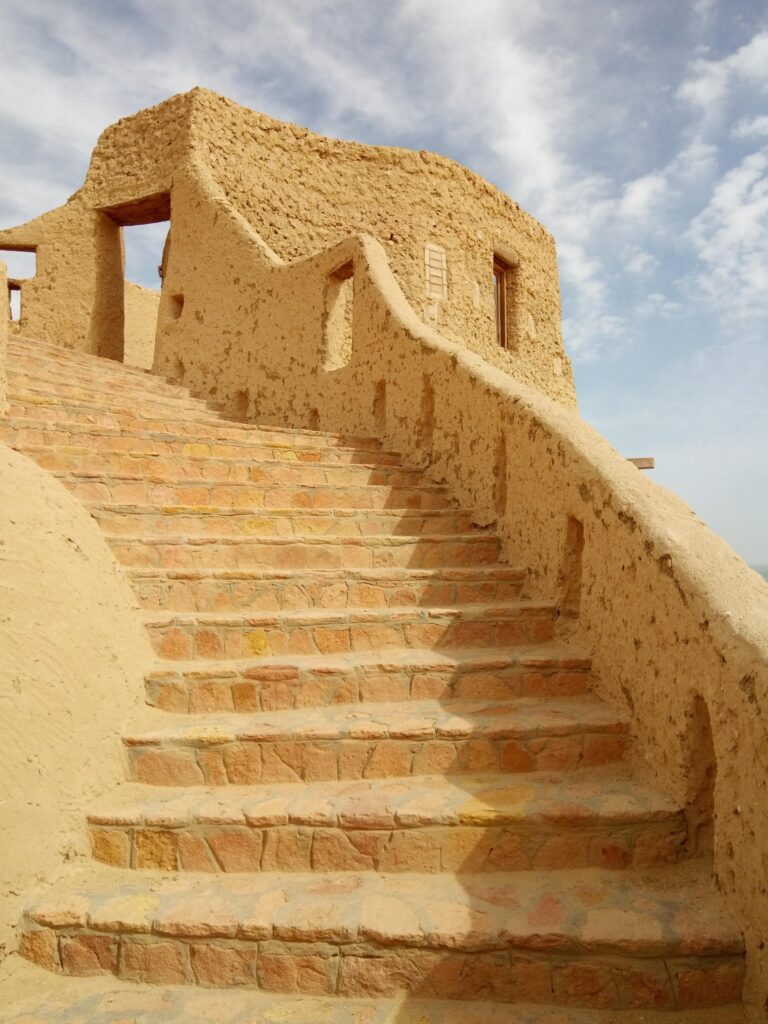
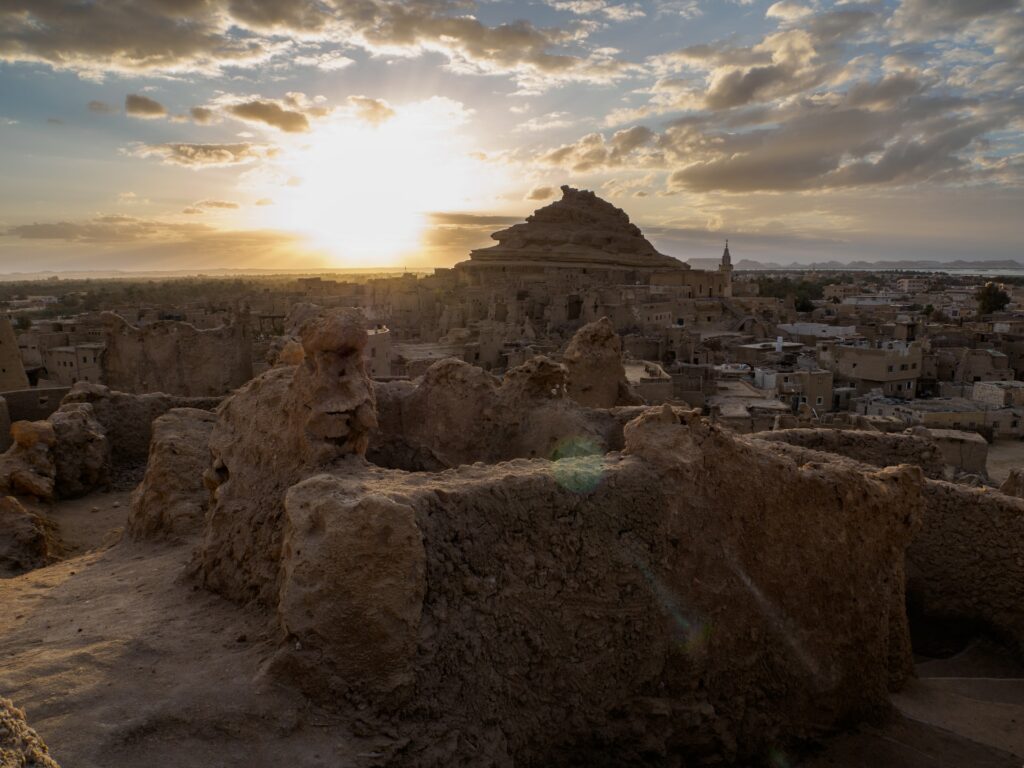
St. Catherine’s Monastery
We are located at the foot of Mount Sinai, near the Burning Bush of Moses at an altitude of 1500 meters. It is also easily accessible from Sharm El-Sheikh, and its name is dedicated to the Roman martyr, a young woman from Alexandria who managed to convert many court intellectuals to Christianity. The monastery is still active and is one of the oldest in the world, its bells have been ringing 33 bells every morning since time immemorial, as in the years of Jesus. The library contains ancient manuscripts, and its value is second only to the Vatican Library. Instead, the museum houses Byzantine icons of absolute value, frescoes, and various decorations.
Taking into account the decrease in temperature at night, you can walk along the path leading at night to the top of Mount Sinai, from where you can admire the sunrise. You climb the Ladder of Repentance (or the Steps of Repentance) and pass by such symbolic places as the Door of Confession and the source of Moses. Or, following a longer trajectory, you still arrive at the Monastery. The panorama leaves behind an exclusive view that stretches from the Gulf of Aqaba to the mountains of Africa and Saudi Arabia.
Sinai
The peninsula combines majestic mountains and colorful rocks, endless stretches of sand, and the extraordinary colors of the Red Sea coast, where turquoise waters are surrounded by one of the most amazing coral reefs in the world. A stormy and fascinating territory divided into two areas: in the north, an arid plateau with the oasis of El Arish and coastal villages inhabited by Bedouins; in the south, Mount Santa Caterina (2,629 meters) and Mount Sinai, where Moses had the tablets of the commandments, in addition to the most popular seaside resorts, from Nuweiba to Charm.
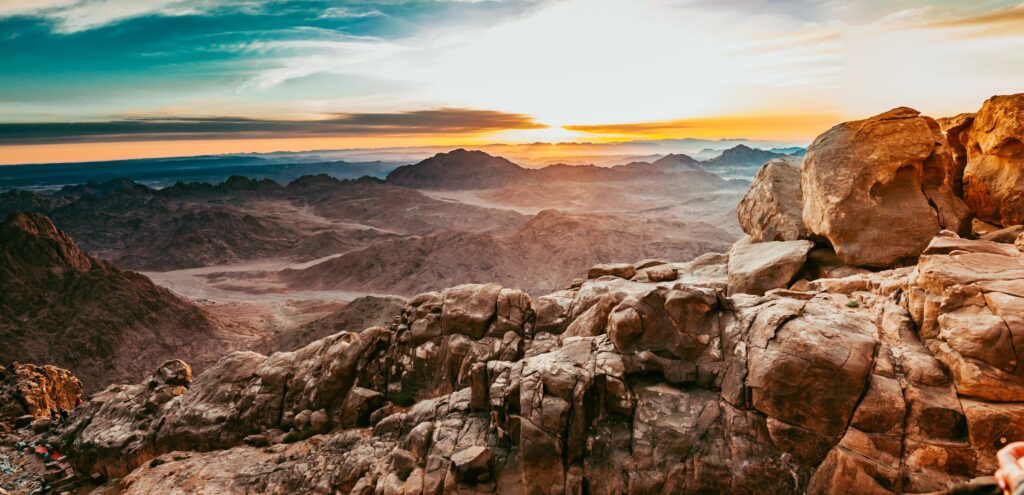
The flagship of the Red Sea coast is certainly Sharm el Sheikh, which offers beautiful beaches and stunning underwater views, water activities such as windsurfing, kiting, or sailing, in addition to a nightlife full of fun. Dahab is also a modern center suitable for young tourists. In front of the beach, the attraction for everyone is a Blue Hole, a sea crater about 80 meters deep. Among the excursions, an interesting excursion to the protected oasis of Ras Abu-Galum and the Colored Canyon along the path between very high stone wallpaper that acquire special colors.
Sakkara
Recently, 27 sarcophagi were discovered here, which greatly enrich the finds of Ancient Egypt. After all, this is a very large archaeological and funerary complex with a large number of tombs and the step pyramid of Djoser, the oldest of all. It was the ancient royal cemetery of the capital Memphis on an area of 7 kilometers in the western desert. Half covered with sand until recently, it has always had as its symbol the pyramid of Djoser, the oldest stone structure of mankind. It was built in the XXVII century BC.
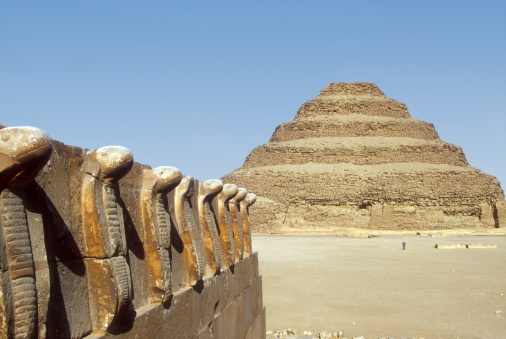
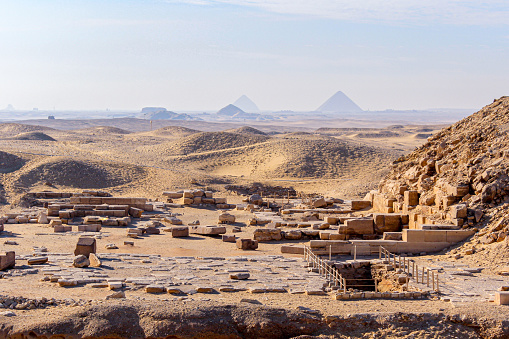
There are ten more pyramids in the area, more or less preserved. Also worth seeing is the Serapeum, the burial chamber of the Apis bull, considered sacred. However, any information is reported in the Imhotep Museum, which is located at the entrance to Sakkara.
Hurghada
A typical place for every tourist package on the Egyptian coast, just a few years ago it was a simple fishing village. Today it is divided into three regions: El-Dahar is the oldest part and is populated by very popular bazaars. Sekalla is the most modern, with many middle-class hotels. El Korra is the most recently built part with more equipped hotels. Over the years, Hurghada has become an international water sports center. There is no shortage of tourist attractions in the surrounding area, from the protected Al-Mahmiya Beach on Giftun Island to the El Gouna complex, a luxury cluster of hotels and villas on islands separated by canals and connected by bridges.
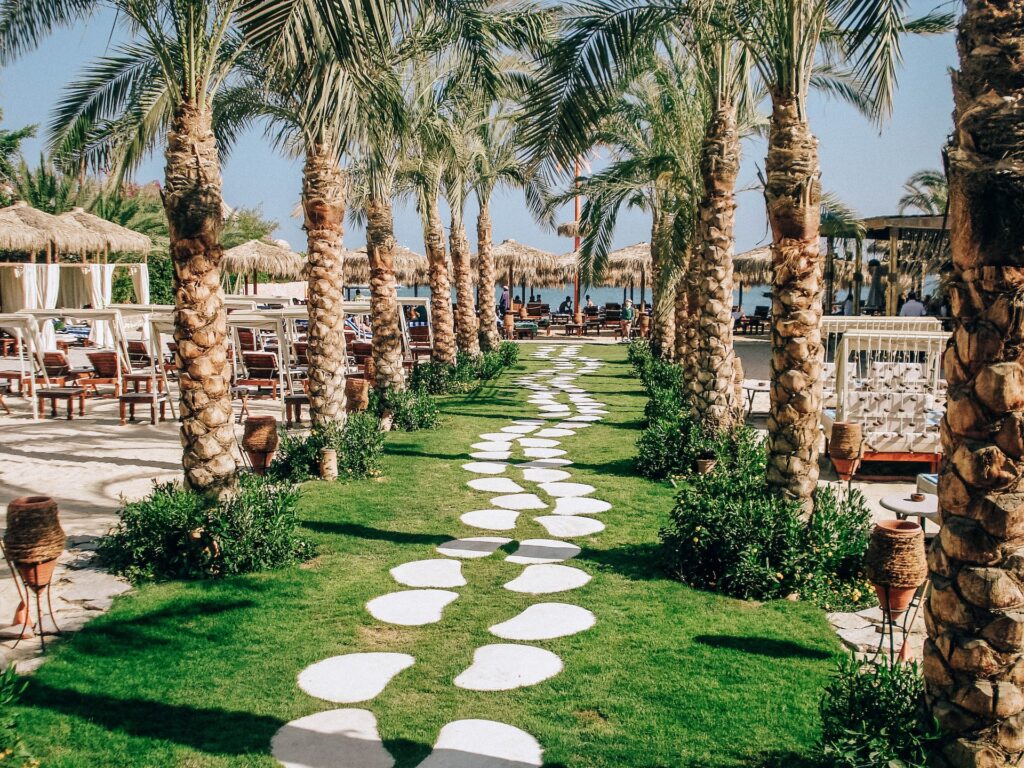
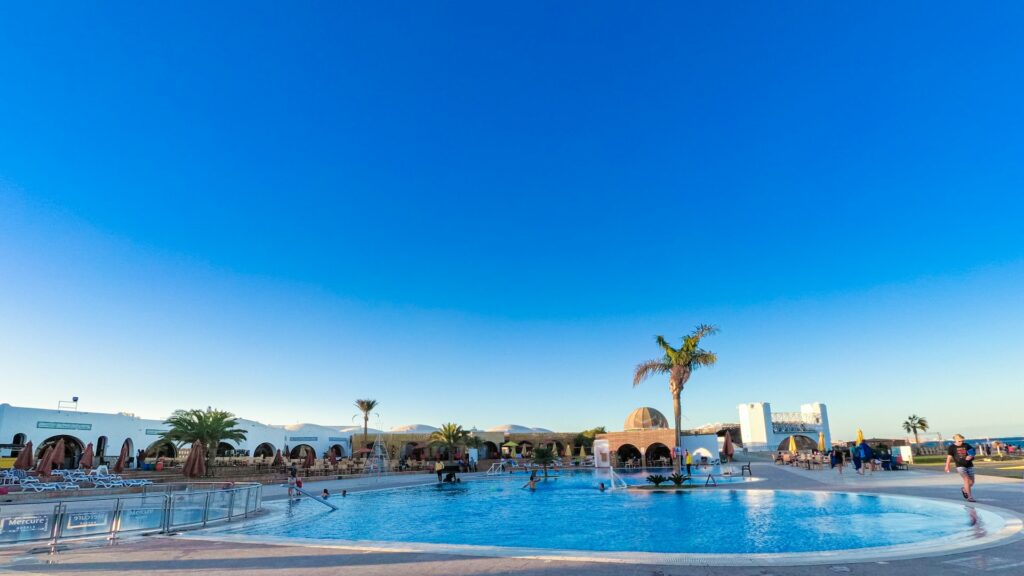
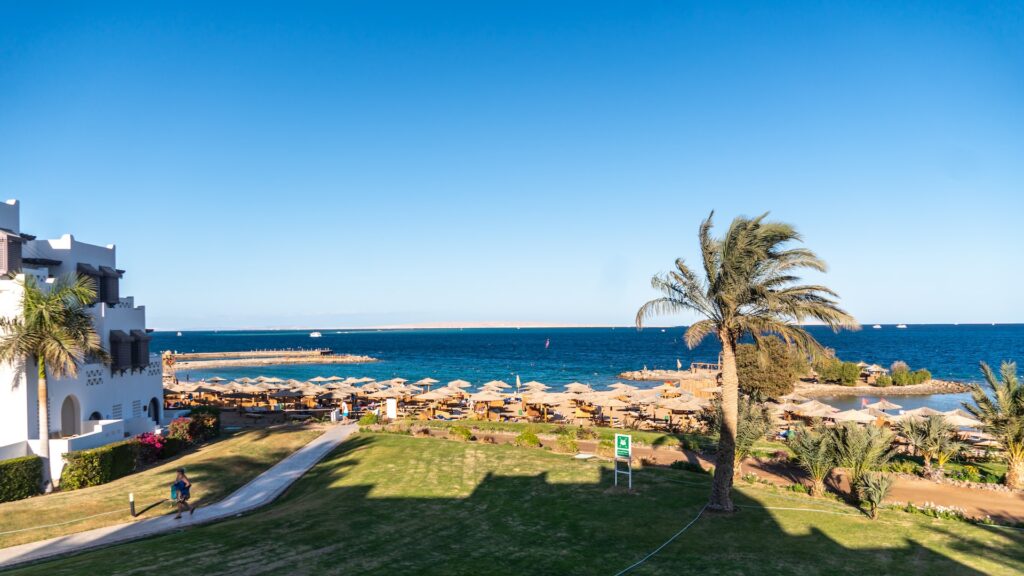
Djoser
Let’s return to Sakkara for a while, where the Djoser funeral center certainly deserves more attention. Surrounded by a ten-meter wall and made of limestone with magnificent carvings, it once included pavilions, courtyards, chapels, and shrines. The entrance remained the same as in ancient times, with a portal that opened from the south-eastern corner onto a gallery supported by forty columns, and which still leads to a Large courtyard, a very large space that represents the Pyramid. On the other side, to the southwest, the building serves as the entrance to the Southern Tomb. In the eastern part, the Heb Sed Courtyard opens, where a feast was traditionally held, at which the king confirmed his power by repeating the coronation ceremony.
Finally, in the north, the remains of two pavilions dedicated to Upper and Lower Egypt, the two kingdoms to which Djoser extended his power, resist. However, perhaps the most unusual point is in the west, this is a stone structure called the serdab, in which there are two holes. If you look through these holes, you will meet the king’s gaze on the face of a life-size statue.
Abido
An ancient place of worship, the Temple of Abydos is located in the city of the same name (actually Abido), which means “temple hill”. It was the center of the worship of Osiris, and legend has it that the head of the god of the dead was kept here. A place of pilgrimage in ancient times, it was believed that among the desert hills around Abydos is the entrance to the afterlife. That is why it has acquired such great importance, and many pharaohs chose it as a burial place. However, there is little to see today except for two temples that are still open to visitors: one dedicated to Sethi I and the other to his son Ramses II. The first one is best preserved. Its ceilings are decorated with a blue starry sky, and rooms and galleries are decorated with hieroglyphs telling about the deeds of the Pharaoh and various deities.
Bahariya
This is one of the most easily accessible oases from Cairo, its landscape is surrounded by high ridges and dotted with date plantations, as well as cool water sources. In recent years, he has also become famous for important archaeological finds, such as the “golden mummies” found in 1996. The administrative capital of Baviti hides other treasures: fertile palm groves protecting springs, such as the El Beshmo spring, discovered during the Roman Empire, or Bir Ramla, where the sulfurous water has a temperature of more than 40 degrees. On the hill of G. Karat Qasr Salim, in the heart of the village of Bauti, the remains of two tombs of the ancient XXVI dynasty are visible. The Oasis Heritage Museum offers clay reproductions of rural life.
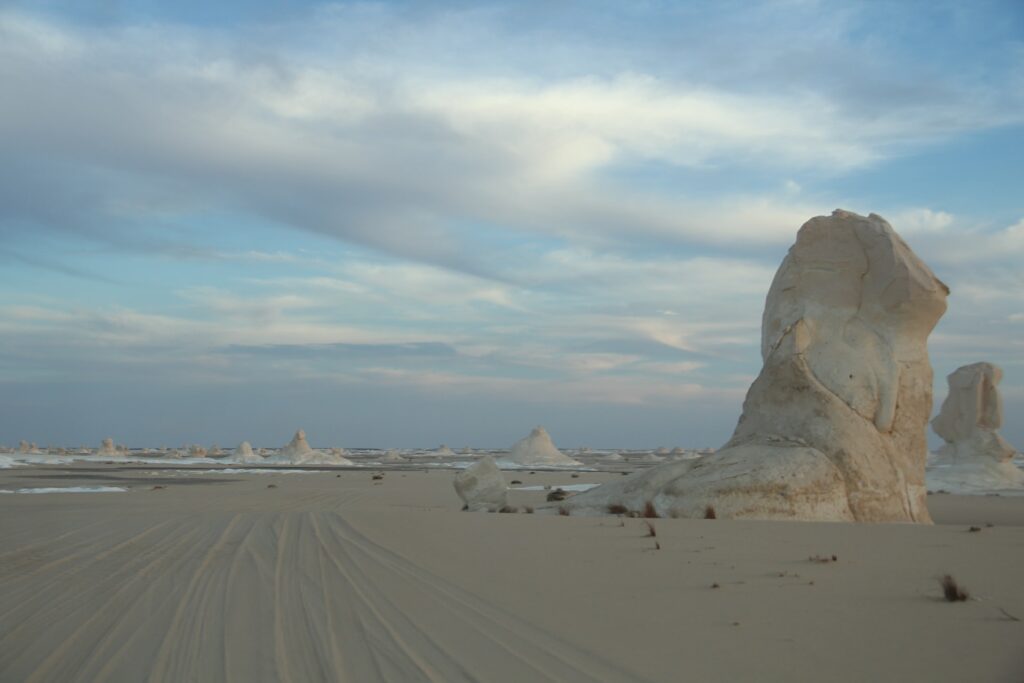
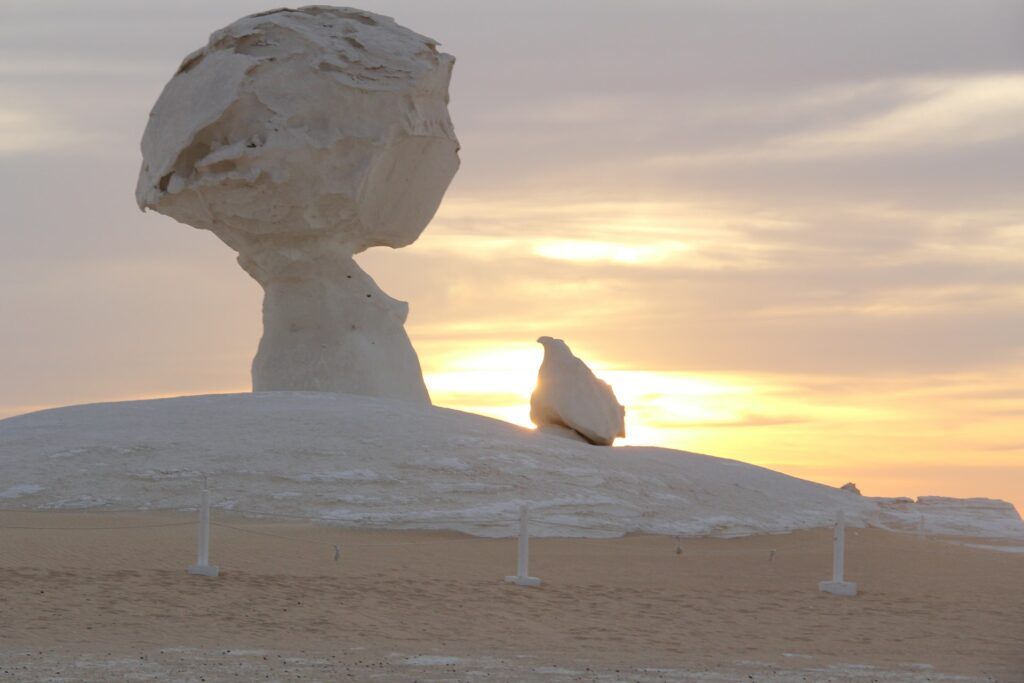
Dakhla
Another oasis to the west of Kharga with more than 600 water sources and natural ponds. In the middle of the gardens, there are old villages with mud brick houses for a population of about 70 thousand people. The city of the same name is a real maze of streets bordered by clay walls, and the feature of the houses are decorated with wooden lintels. There is also no shortage of points of historical interest here. Indeed, studies show that people have lived in Dakhla since prehistoric times. The tombs of El Muzawak date back to Roman times, and the citadel of El Qasr has a medieval origin in the ruins of a Roman village.
Nabq
To the north of Sharm el-Sheikh is a 600 km wide marine reserve that covers the Gulf of Aqaba. Mountain ranges are visible in the background, and the coast is characterized by a long strip of mangroves. In addition to being typical trees near marine areas, they serve as a natural breeding ground for fish and crustaceans, a nesting place for birds, and breakwaters for the most dangerous waves up to a tsunami.
The whole park is beautiful because of the wide variety of ecosystems. There are coral reefs, seaweed thickets, as well as an environment that changes from desert to mountains. Among the animals, one of the largest populations of gazelles. Nabq is an ideal place to observe nature in the greenery and on the sea, in addition to the villages of Kereiza and El—Garkanah, stationary settlements of Bedouins.










I’ve always wanted to see the pyramids! Huge history buff here, this would be a dream come true for me!
Cairo is the only one I’ve visited so far but it didn’t impress me enough to make me want to come back for more. I’m a well-built man in his mid 40’s so personal security wasn’t an issue for me but boy, Cairo is full of scammers and swindlers. From the hotel staff to the waiter, everyone was trying to get by me for some extra cash. The worst of the worst was a taxi driver – the first and last I’ve used in Cairo, reverted to Uber as fast as I could – be overcharged me like and then started getting defensive.